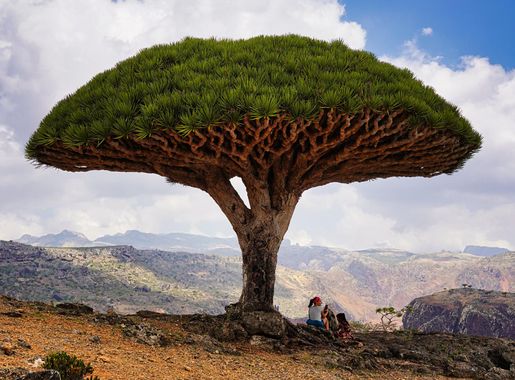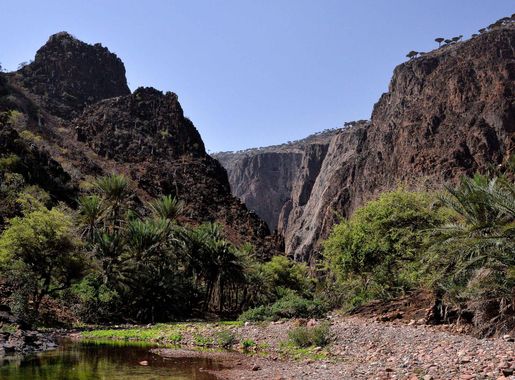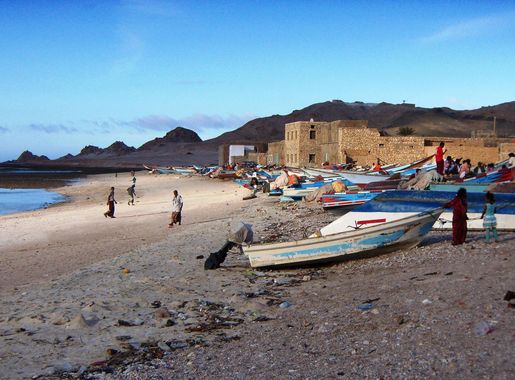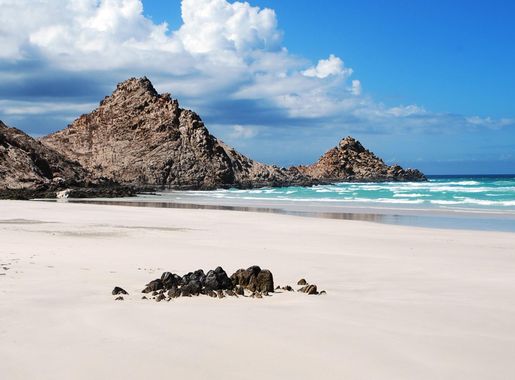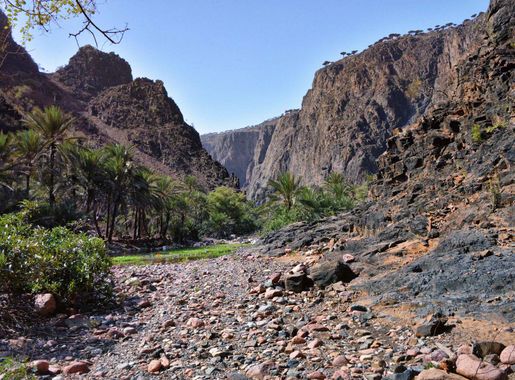
The Mysterious Beauty of Socotra Island
Discover the enchanting landscapes and unique biodiversity of Socotra Island, Yemen, a natural wonder and cultural treasure in the Indian Ocean.
Socotra Island, part of Yemen, is a unique destination renowned for its otherworldly landscapes and rich biodiversity. Often referred to as the 'Galápagos of the Indian Ocean,' this island is home to numerous plant and animal species found nowhere else on Earth. Its most iconic symbol is the Dragon's Blood Tree, with its umbrella-like canopy and red sap that has been used for centuries for medicinal and dye purposes. The island's diverse ecosystems range from sandy beaches and limestone caves to lush green mountains and desert plains. This variety makes Socotra a paradise for nature enthusiasts and adventure seekers. The azure waters surrounding the island are perfect for snorkeling and diving, revealing vibrant coral reefs and a plethora of marine life. Bird watchers will also be delighted by the many endemic species that inhabit the island. Beyond its natural wonders, Socotra offers a glimpse into a traditional way of life that has remained largely unchanged for centuries. The local Socotri people have a rich cultural heritage and speak their own unique language. Visitors can experience their hospitality and learn about their customs and traditions, making a visit to Socotra not just an exploration of nature but also a cultural journey.
Local tips in Socotra Island
- Visit during the dry season from October to April for the best weather and accessibility.
- Hire a local guide to navigate the island and learn about its unique flora and fauna.
- Pack essentials like sunscreen, hats, and plenty of water as amenities are limited.
- Respect local customs and traditions; dress modestly and ask for permission before taking photos of people.
- Ensure you have all necessary travel permits and check for any travel advisories before planning your visit.
The Mysterious Beauty of Socotra Island
Socotra Island, part of Yemen, is a unique destination renowned for its otherworldly landscapes and rich biodiversity. Often referred to as the 'Galápagos of the Indian Ocean,' this island is home to numerous plant and animal species found nowhere else on Earth. Its most iconic symbol is the Dragon's Blood Tree, with its umbrella-like canopy and red sap that has been used for centuries for medicinal and dye purposes. The island's diverse ecosystems range from sandy beaches and limestone caves to lush green mountains and desert plains. This variety makes Socotra a paradise for nature enthusiasts and adventure seekers. The azure waters surrounding the island are perfect for snorkeling and diving, revealing vibrant coral reefs and a plethora of marine life. Bird watchers will also be delighted by the many endemic species that inhabit the island. Beyond its natural wonders, Socotra offers a glimpse into a traditional way of life that has remained largely unchanged for centuries. The local Socotri people have a rich cultural heritage and speak their own unique language. Visitors can experience their hospitality and learn about their customs and traditions, making a visit to Socotra not just an exploration of nature but also a cultural journey.
When is the best time to go to Socotra Island?
Unmissable attractions to see
Qalansiyah beach
Discover the pristine shores and vibrant marine life at Qalansiyah Beach, a hidden gem on Yemen's Socotra Island, perfect for relaxation and adventure.
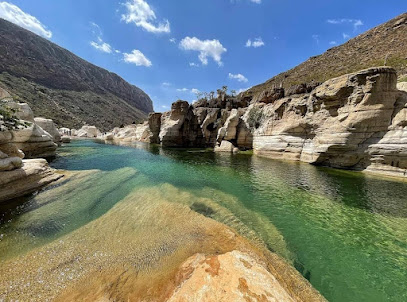
Detwah Lagoon Ramsar Site
Explore the tranquil Detwah Lagoon Ramsar Site in Yemen, a paradise for nature lovers and a perfect getaway for relaxation and adventure.
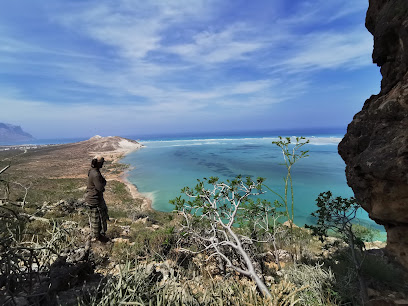
Diksam
Explore the breathtaking landscapes and rich biodiversity of Diksam National Park in Tahr, Yemen, an unforgettable destination for nature lovers.
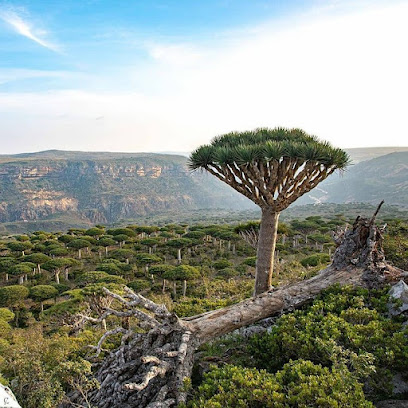
جزيرة سقطرى اليمنية
Discover the untouched beauty and rich culture of Saktuori Island, a hidden gem in Yemen, perfect for adventurous travelers seeking tranquility.
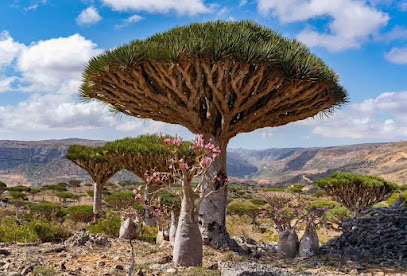
Socotra Pioneer Tours
Discover Socotra's unique landscapes and biodiversity with tailored tours from Socotra Pioneer Tours, the leading travel agency on the island.
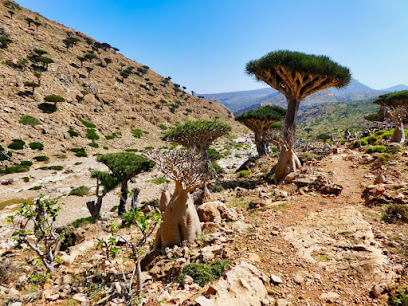
سقطرئ اليمنيه
Discover Saqtar Al-Yemeni, a picturesque tourist attraction in Tahr, Yemen, rich in culture and stunning landscapes that captivate every traveler.
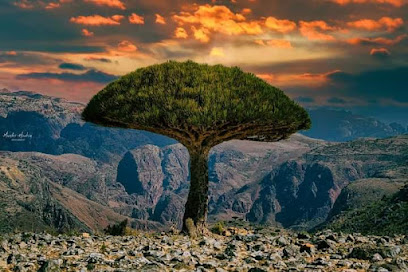
جزيرة سقطرى الجمهوريه اليمنية
Discover Socotra Island, Yemen's hidden gem, where unique biodiversity and stunning landscapes await every adventurous traveler.
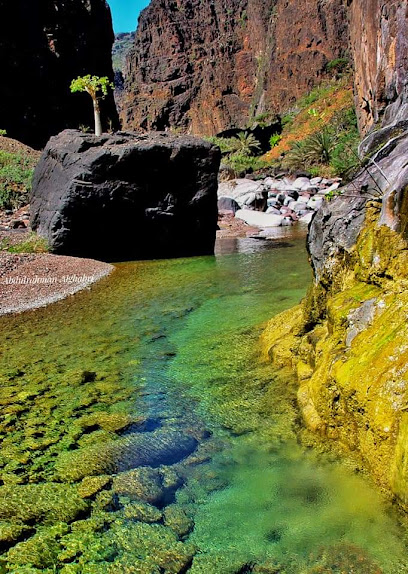
Aomak Beach شاطئ عومق
Discover the serene beauty of Aomak Beach in Yemen, where golden sands and azure waters create a perfect escape for every traveler.
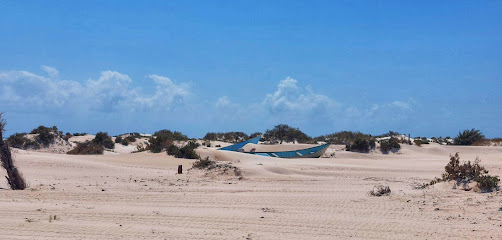
Detwah Lagoon
Experience the breathtaking beauty of Detwah Lagoon in Yemen, where pristine waters meet stunning landscapes on the enchanting island of Socotra.
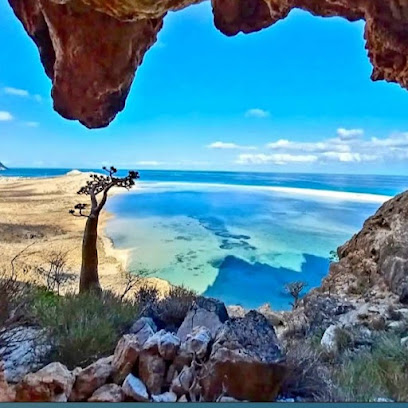
Qabahen Village
Explore Qabahen Village, a hidden gem in Socotra, Yemen, renowned for its breathtaking landscapes, unique biodiversity, and vibrant local culture.
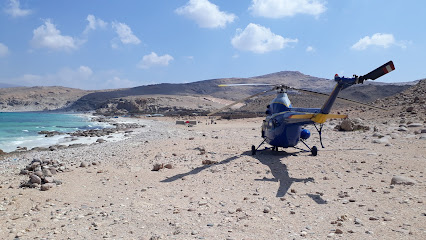
Experience Socotra
Explore the breathtaking biodiversity and unique landscapes of Socotra Island, a hidden gem in Yemen, perfect for adventurous travelers and nature enthusiasts.
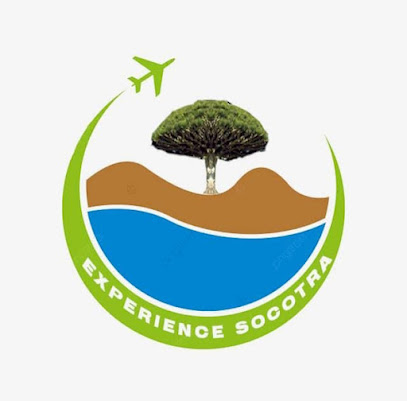
Essential places to dine
Socotra
Explore Socotra: A Unique Island Paradise with Stunning Landscapes and Rich Biodiversity Awaiting Your Discovery.

Summer Land Hotel
Experience unparalleled comfort at Summer Land Hotel in Hadiboh, Yemen - your gateway to exploring Socotra's breathtaking landscapes.

Diksam
Explore Diksam National Park: A breathtaking Yemeni paradise with unique flora, stunning landscapes, and rich biodiversity.
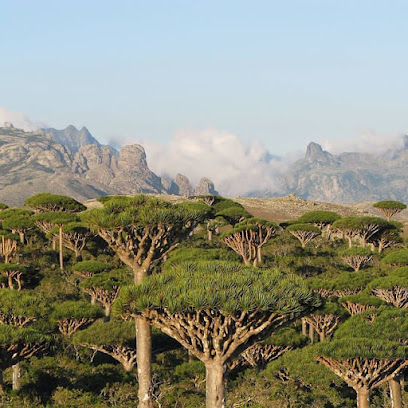
سلسلة مطاعم شبوة
Savor the finest seafood delicacies at سلسلة مطاعم شبوة in Hadiboh - an unforgettable taste of Yemen's coastal cuisine.
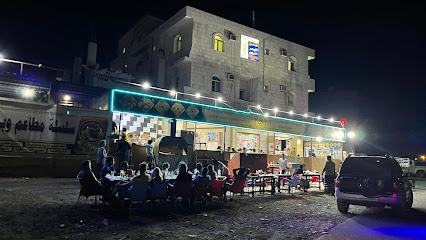
مطعم سقطرئ السياحي
Experience authentic Yemeni flavors at مطعم سقطرئ السياحي in Hadiboh - where every meal tells a story.

Markets, malls and hidden boutiques
محلات بن مهيوب للملابس والاحذية والأدوات المنزلية
Discover the finest kitchen supplies and unique home goods at محلات بن مهيوب in Socotra, where quality meets local charm.
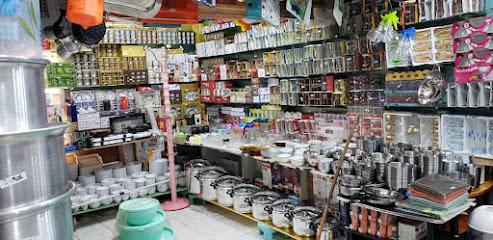
محلات أبو مهيب للمفروشات سقطرى
Discover the best in comfort and local craftsmanship at Abu Muhayb Furniture Stores, your destination for quality mattresses in Socotra.
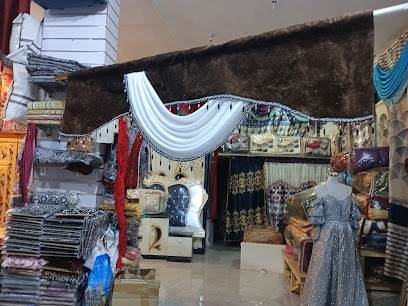
عالم الاحذيه والاالعاب والكسسوارات
Discover unique footwear and accessories in Hadibo, Socotra, showcasing local craftsmanship and vibrant shopping culture.

SOMIK SHOPPING
Discover Somik Shopping Mall in Qalansiyah, Yemen – a vibrant shopping destination offering a mix of local brands, dining, and entertainment for all ages.

محل الاندرويد للاكترونيات والحوالات السريعه
Explore quality electronics and fast transfer services at محل الاندرويد للاكترونيات والحوالات السريعه in Socotra, Yemen.

سميرالمليكي
Experience local life in Hadiboh at سميرالمليكي Grocery Store, where fresh produce and Yemeni flavors await your discovery.

كفتيريا تاج سقطرى
Discover Kafeteria Taj Socotra: A delightful coffee shop in Hadiboh, Yemen, where you can savor local brews and delicious snacks.

Hadiboh
Explore Hadiboh, the cultural heart of Socotra Island, where unique biodiversity meets vibrant local traditions and stunning natural landscapes.

Fish market
Explore Hadiboh Fish Market for a vibrant glimpse into Yemeni culture, where fresh seafood meets lively local interactions.

Rajehsaif2020
Discover the pristine beauty and rich culture of Mori Island, Yemen, a hidden paradise perfect for adventure and relaxation.

محلات وائل الشرعبي
Explore محلات وائل الشرعبي in Hadiboh, Yemen - a vibrant shopping mall offering a blend of local culture, shopping, and dining experiences.

بقالة البركة
Explore authentic Yemeni flavors at بقالة البركة, a local grocery store in Hadiboh offering fresh produce and local delicacies.
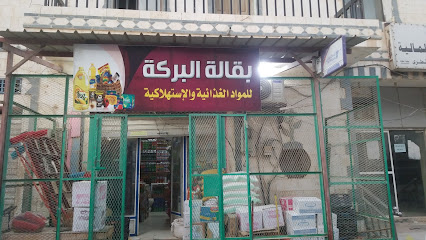
بقاله الوحده
Explore the authentic Yemeni supermarket بقاله الوحده in Steroh for a unique shopping experience filled with local flavors and products.

مسجد
Discover the beauty and tranquility of the Mosque in Yemen, a captivating site rich in culture and Islamic architecture.

Hadibo women's association
Experience the rich culture and craftsmanship of Yemen at the Hadibo Women's Association, where tradition meets empowerment.
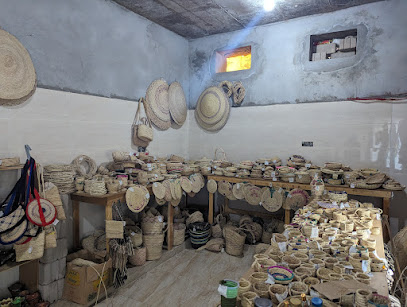
Essential bars & hidden hideouts
مطعم و مقهى سقطرى للمندي و المظبي و المشاوي
Discover the rich flavors of Yemen at Saqatra Restaurant, a culinary gem in Dubai offering authentic dishes and warm hospitality.
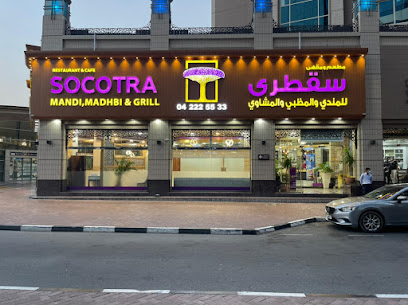
Diksam
Explore Diksam National Park in Yemen, where breathtaking landscapes and unique wildlife await every nature enthusiast.

سلسلة مطاعم شبوة
Indulge in the freshest seafood dishes at سلسلة مطاعم شبوة in Hadiboh, Yemen, where tradition meets flavor in an unforgettable dining experience.
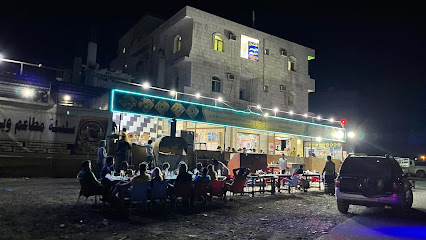
Ahmet culum cük kebab
Experience the authentic flavors of Yemen at Ahmet Culüm Cük Kebab, a culinary gem in Mutra known for its traditional kebabs and warm hospitality.
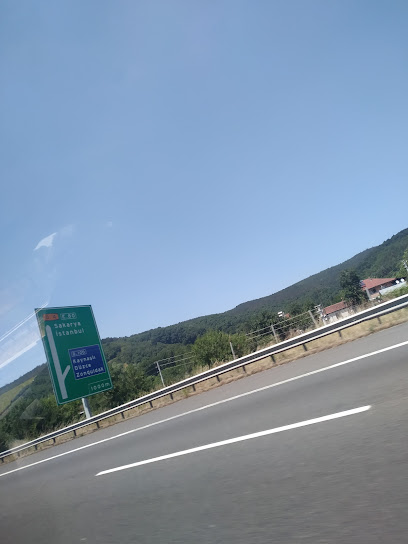
مطعم السمك العربي
Experience the best seafood in Steroh at مطعم السمك العربي, where freshness and flavor combine for an unforgettable meal.

Hadiboh
Discover the vibrant culture and stunning natural beauty of Hadiboh, the captivating capital of Socotra, Yemen.
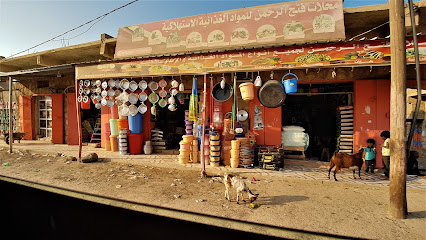
مطعم ومطبخ المكلا السياحي
Experience the authentic tastes of Yemen at مطعم ومطبخ المكلا السياحي in Hadiboh, where traditional dishes meet warm hospitality.
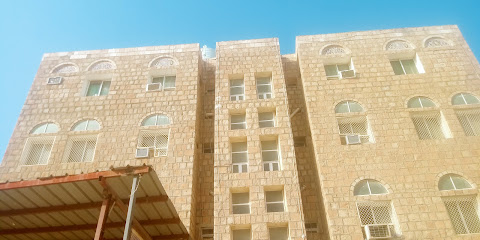
مطعم سقطرئ السياحي
Experience the authentic flavors of Yemen at مطعم سقطرئ السياحي in Hadiboh, where every dish tells a story.

Local Phrases about Socotra Island
-
- Helloسلام
[salaam] - Goodbyeمع السلامة
[ma'a as-salama] - Yesنعم
[na'am] - Noلا
[laa] - Please/You're welcomeمن فضلك
[min fadlik] - Thank youشكراً
[shukran] - Excuse me/Sorryعذراً
['udhran] - How are you?كيف حالك؟
[kayfa halik?] - Fine. And you?بخير. وأنت؟
[bikhayr. wa'ant?] - Do you speak English?هل تتحدث الإنجليزية؟
[hal tatahadath al-inglizia?] - I don't understandأنا لا أفهم
[ana la afham]
- Helloسلام
-
- I'd like to see the menu, pleaseأرغب في رؤية القائمة، من فضلك
[urghib fi ru'yat al-qa'imah, min fadlik] - I don't eat meatأنا لا آكل اللحم
[ana la aakul al-lahm] - Cheers!في صحتك!
[fi sahtak!] - I would like to pay, pleaseأود أن أدفع، من فضلك
[awad an adfaa, min fadlik]
- I'd like to see the menu, pleaseأرغب في رؤية القائمة، من فضلك
-
- Help!النجدة!
[al-najdah!] - Go away!انصرف!
[insarf!] - Call the Police!اتصل بالشرطة!
[atasil bialshurta!] - Call a doctor!اتصل بالطبيب!
[atasil bialtabib!] - I'm lostضللت الطريق
[dalalt al-tariq] - I'm illأنا مريض
[ana mareed]
- Help!النجدة!
-
- I'd like to buy...أرغب في شراء...
[urghib fi shira...] - I'm just lookingأنا فقط أتفرج
[ana faqat atfarij] - How much is it?بكم ثمنه؟
[bi kam thamanuh?] - That's too expensiveهذا غالي جداً
[hatha ghali jiddan] - Can you lower the price?هل يمكنك خفض السعر؟
[hal yumkinuk khafd al-si'ar?]
- I'd like to buy...أرغب في شراء...
-
- What time is it?كم الساعة؟
[kam al-sa'ah?] - It's one o'clockالساعة الواحدة
[al-sa'ah al-wahidah] - Half past (10)الساعة العاشرة والنصف
[al-sa'ah al-'ashirah wal-nisf] - Morningالصباح
[al-sabah] - Afternoonالظهر
[al-dhuhr] - Eveningالمساء
[al-masa'] - Yesterdayأمس
[ams] - Todayاليوم
[al-yawm] - Tomorrowغداً
[ghadan] - 1واحد
[wahid] - 2اثنان
['ithnan] - 3ثلاثة
[thalatha] - 4أربعة
[arba'a] - 5خمسة
[khamsa] - 6ستة
[sitta] - 7سبعة
[sab'a] - 8ثمانية
[thamania] - 9تسعة
[tis'a] - 10عشرة
['ashara]
- What time is it?كم الساعة؟
-
- Where's a/the...?أين...
[ayn...] - What's the address?ما هو العنوان؟
[ma huwa al-anaan?] - Can you show me (on the map)?هل يمكنك أن تريني (على الخريطة)؟
[hal yumkinuk an tarini (ala al-kharitah)?] - When's the next (bus)?متى يأتي الحافلة التالية؟
[mata ya'ti al-hafila al-taliyah?] - A ticket (to ....)تذكرة (إلى ...)
[tazkirah (ila ...)]
- Where's a/the...?أين...
History of Socotra Island
-
Socotra Island has been a significant waypoint for ancient maritime trade routes. Positioned at the crossroads of the Indian Ocean and the Arabian Sea, it was a crucial stop for ships traveling between the Mediterranean, the Middle East, India, and East Africa. The island's strategic location made it a hub for the exchange of goods, cultures, and ideas.
-
One of Socotra's most distinctive features is its endemic flora, including the famous Dragon's Blood Trees (Dracaena cinnabari). These trees have been valued since antiquity for their red resin, which was believed to have medicinal properties and used as a dye and incense. The unique biodiversity of the island has earned it the nickname 'the Galápagos of the Indian Ocean.'
-
According to some historical accounts, Socotra was known to the ancient Greeks and was possibly visited by sailors during the time of Alexander the Great. The island's name itself is thought to derive from the Sanskrit 'Dvipa Sukhadhara,' meaning 'Island of Bliss.' This period marked the beginning of Socotra's integration into the wider world.
-
The native language of Socotra, Socotri, is a South Arabian language that is only spoken on the island. It has a rich oral tradition with poetry and folklore that reflect the island's unique heritage. The Socotri culture is deeply tied to the land and sea, with traditional fishing, herding, and date cultivation being central to their way of life.
-
In the 16th century, the strategic importance of Socotra led to its occupation by the Portuguese, who sought control over the maritime spice trade routes. Later, the Ottoman Empire also laid claim to the island. These periods of foreign domination left their mark on Socotra's cultural and historical landscape.
-
In the 19th century, Socotra came under British influence as part of their broader colonial interests in the region. The island was used as a coaling station for British ships navigating the Indian Ocean, further cementing its role as a key maritime waypoint.
-
In recent years, Socotra has faced challenges due to political instability in Yemen. However, efforts have been made to preserve its unique natural environment and cultural heritage. The island was designated a UNESCO World Heritage Site in 2008, recognizing its unparalleled biodiversity and cultural significance.
Socotra Island Essentials
-
Socotra Island is located in the Arabian Sea, part of Yemen. The most common way to get to Socotra is via a flight from Cairo, Egypt, or Seiyun, Yemen. Flights are limited and may operate only a few times a week, so it's essential to plan your travel in advance. The island's main airport is Socotra Airport (SCT). Alternatively, some adventurous travelers opt for private boats from mainland Yemen, though this is less common and not always recommended due to safety concerns.
-
Once on Socotra Island, the primary modes of transportation are 4x4 vehicles and boats. Public transportation is virtually non-existent, and the rugged terrain makes renting a 4x4 vehicle the best option for exploring the island. It's advisable to hire a local driver who is familiar with the island's roads and conditions. Bicycles and walking are also popular for shorter distances and specific areas.
-
The official currency on Socotra Island is the Yemeni Rial (YER). Credit cards are rarely accepted, so it is crucial to carry enough cash for your entire stay. ATMs are limited and often unreliable, so it is best to withdraw sufficient cash before arriving on the island. Additionally, small denominations are preferred as change can be scarce.
-
Socotra Island is generally considered safe for tourists, but standard precautions should be taken. Avoid traveling alone at night and always be aware of your surroundings. There are no specific high-crime areas targeting tourists, but it is wise to keep your belongings secure and avoid displaying valuables. Check current travel advisories before planning your trip, as the political situation in Yemen can be volatile.
-
In case of an emergency, contact the local authorities or your country's embassy in Yemen. Medical facilities on Socotra are basic, so travel insurance that includes medical evacuation is highly recommended. For minor health issues, there are pharmacies where you can purchase over-the-counter medications. It’s also a good idea to carry a basic first-aid kit.
-
Fashion: Do dress modestly. Both men and women should avoid wearing revealing clothing. Religion: Do respect local customs and traditions. Public Transport: Do be prepared for a lack of public transport and rely on private arrangements. Greetings: Do greet locals with a friendly smile and a nod; handshakes are also common. Eating & Drinking: Do try local foods and accept hospitality graciously. Don’t refuse food or drink offerings, as this can be considered impolite.
-
To experience Socotra Island like a local, visit the traditional markets and interact with the islanders. They are known for their hospitality and are often willing to share their knowledge of the island's unique flora and fauna. Don’t miss exploring the Dragon’s Blood Tree forest, and consider taking a guided tour to learn more about the island’s natural history. Also, try to visit Homhil Protected Area for its natural swimming pools and breathtaking views.
Nearby Cities to Socotra Island
-
Things To Do in Mirbat
-
Things To Do in Aden
-
Things To Do in Dhamar
-
Things To Do in Ibb
-
Things To Do in Sana'a
-
Things To Do in Hargeisa
-
Things To Do in Obock
-
Things To Do in Loyada
-
Things To Do in Djibouti City
-
Things To Do in Najran
-
Things To Do in Tadjoura
-
Things To Do in Arta
-
Things To Do in Ali Sabieh
-
Things To Do in Bahla
-
Things To Do in Nizwa

